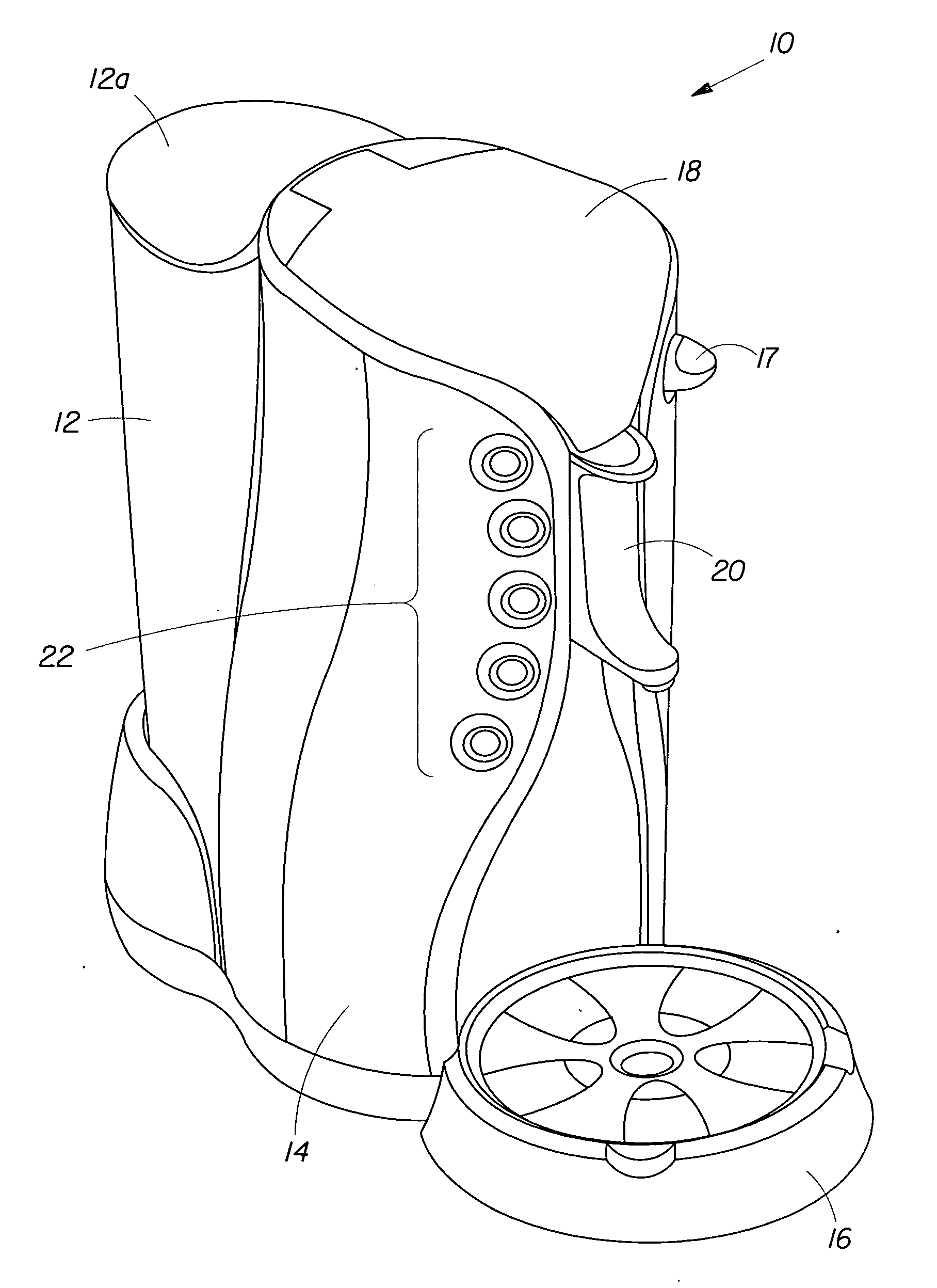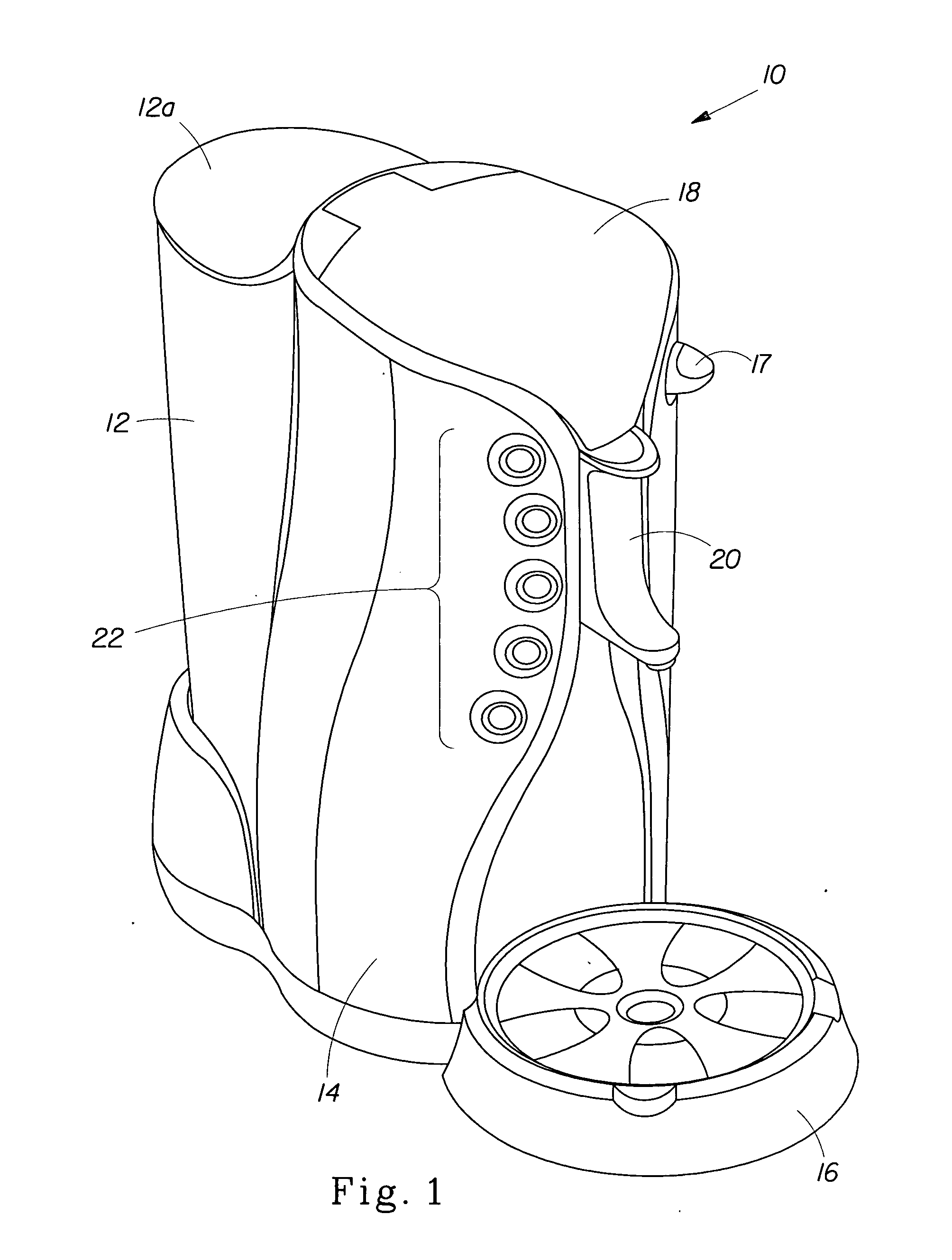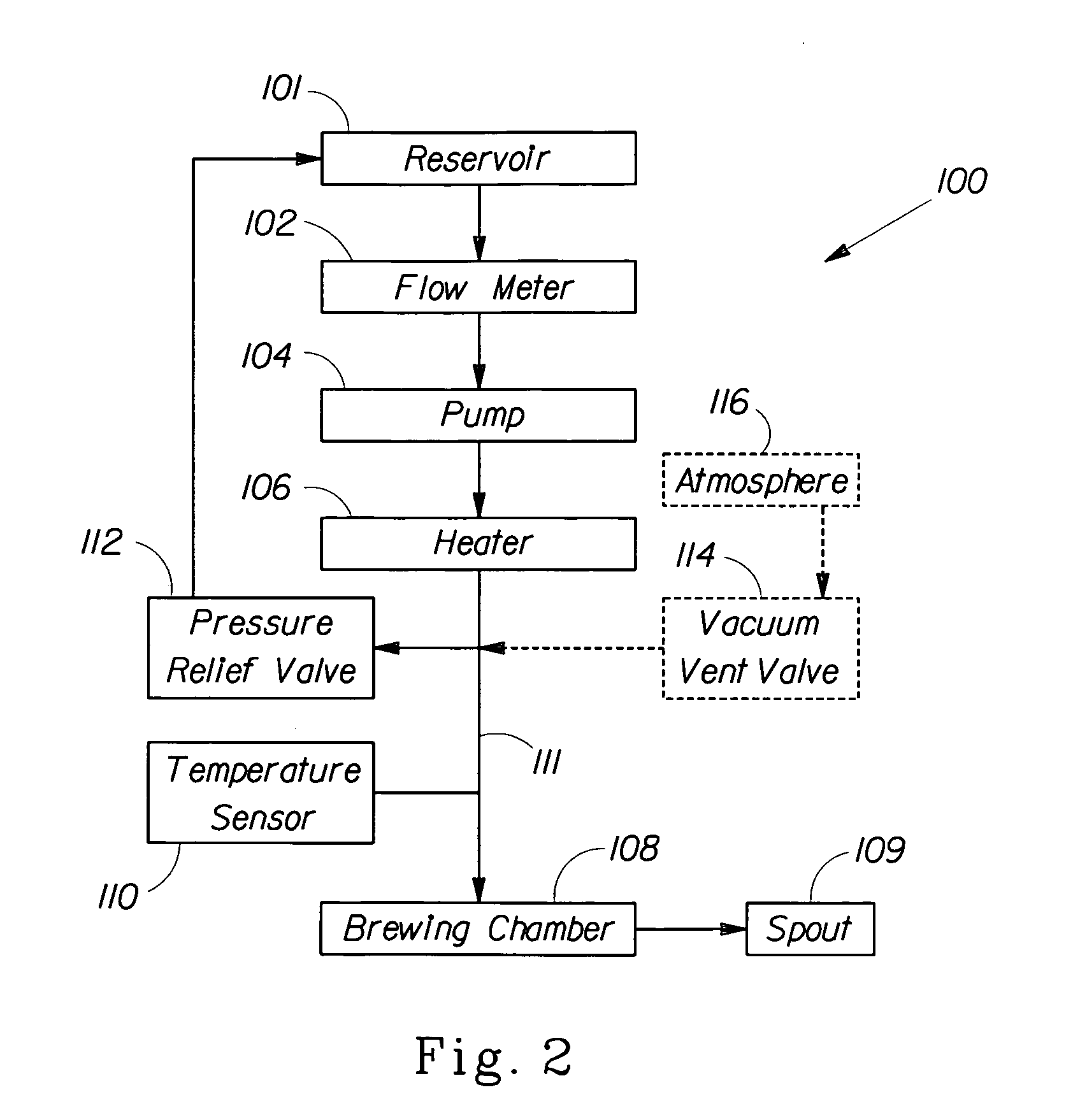Method and device for brewing beverages
a technology for brewing beverages and brewing chambers, which is applied in beverage vessels, household appliances, kitchen equipment, etc., can solve the problems of long pre-brew heating process which can last 90 seconds or more, takes a long time to heat up the water at the beginning of the brewing process, and can not be used in the brewing process for a long time. , to achieve the effect of reducing the storage capacity of the heater, facilitating cleaning out of the brewing chamber, and high degree of control
- Summary
- Abstract
- Description
- Claims
- Application Information
AI Technical Summary
Benefits of technology
Problems solved by technology
Method used
Image
Examples
Embodiment Construction
[0028]Referring now to the drawings in which like numerals designate like parts throughout the various views, preferred embodiments of a brewing method and device are shown.
[0029]FIG. 1 shows one embodiment 10 of a brewing device. The brewing device 10 includes a storage reservoir 12 for holding a supply of brewing liquid such as water, a brewing unit 14 in which the brewed beverage is prepared, and a drip tray 16. The storage reservoir 12 is shown as a separate component from the brewing unit 14, but may of course be alternatively disposed within the brewing unit 14. The brewing unit 14 may include a release handle 17 for releasing a closure mechanism 18, a dispensing outlet including a spout 20 for dispensing a brewed beverage, and one or more operational control switches 22 to control aspects of the brewing operation. Such aspects may include for example duration of brewing and amount of brewed beverage to dispense. The storage reservoir 12 has a removable lid 12a to facilitate r...
PUM
 Login to View More
Login to View More Abstract
Description
Claims
Application Information
 Login to View More
Login to View More - R&D
- Intellectual Property
- Life Sciences
- Materials
- Tech Scout
- Unparalleled Data Quality
- Higher Quality Content
- 60% Fewer Hallucinations
Browse by: Latest US Patents, China's latest patents, Technical Efficacy Thesaurus, Application Domain, Technology Topic, Popular Technical Reports.
© 2025 PatSnap. All rights reserved.Legal|Privacy policy|Modern Slavery Act Transparency Statement|Sitemap|About US| Contact US: help@patsnap.com



